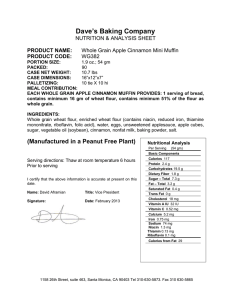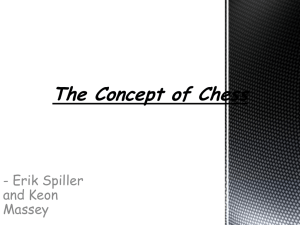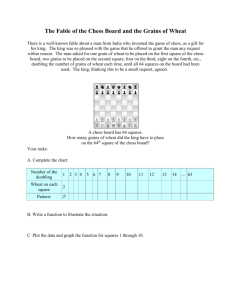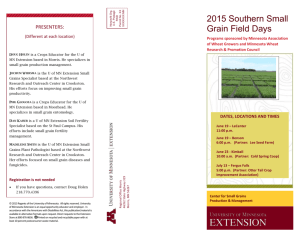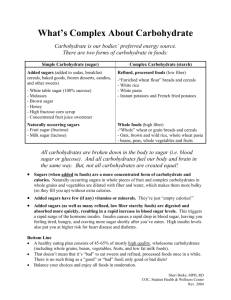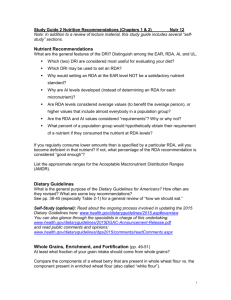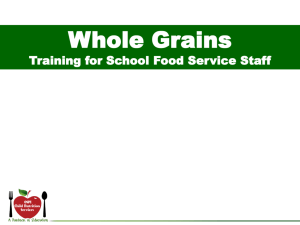Healthy Choices for Every Meal
advertisement
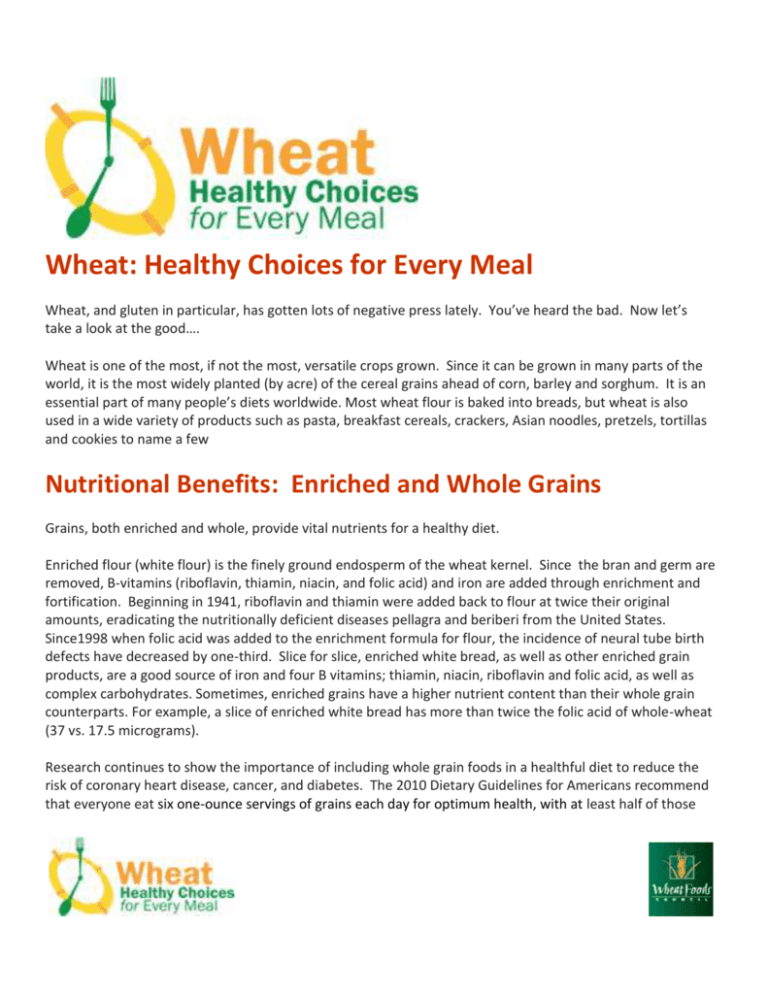
Wheat: Healthy Choices for Every Meal Wheat, and gluten in particular, has gotten lots of negative press lately. You’ve heard the bad. Now let’s take a look at the good…. Wheat is one of the most, if not the most, versatile crops grown. Since it can be grown in many parts of the world, it is the most widely planted (by acre) of the cereal grains ahead of corn, barley and sorghum. It is an essential part of many people’s diets worldwide. Most wheat flour is baked into breads, but wheat is also used in a wide variety of products such as pasta, breakfast cereals, crackers, Asian noodles, pretzels, tortillas and cookies to name a few Nutritional Benefits: Enriched and Whole Grains Grains, both enriched and whole, provide vital nutrients for a healthy diet. Enriched flour (white flour) is the finely ground endosperm of the wheat kernel. Since the bran and germ are removed, B-vitamins (riboflavin, thiamin, niacin, and folic acid) and iron are added through enrichment and fortification. Beginning in 1941, riboflavin and thiamin were added back to flour at twice their original amounts, eradicating the nutritionally deficient diseases pellagra and beriberi from the United States. Since1998 when folic acid was added to the enrichment formula for flour, the incidence of neural tube birth defects have decreased by one-third. Slice for slice, enriched white bread, as well as other enriched grain products, are a good source of iron and four B vitamins; thiamin, niacin, riboflavin and folic acid, as well as complex carbohydrates. Sometimes, enriched grains have a higher nutrient content than their whole grain counterparts. For example, a slice of enriched white bread has more than twice the folic acid of whole-wheat (37 vs. 17.5 micrograms). Research continues to show the importance of including whole grain foods in a healthful diet to reduce the risk of coronary heart disease, cancer, and diabetes. The 2010 Dietary Guidelines for Americans recommend that everyone eat six one-ounce servings of grains each day for optimum health, with at least half of those servings from whole-grains (i.e. whole wheat bread, whole grain cereal, whole wheat crackers, or whole wheat pasta) every day. Whole grain products are made with the whole kernel of grain. They provide protein and carbohydrates along with B vitamins, trace minerals, unsaturated fats, antioxidants (e.g., selenium and vitamin E) and a wide range of phytonutrients that may reduce the risk of cancer. Enriched and Whole Grains: Healthy Choices to Make Throughout the Day Here are some nutritious, delicious, convenient ways to work healthy grains into your daily routine: Breakfast Simply grab a bowl of whole grain cereal. Pour on some fat-free or low-fat milk, or mix with low-fat yogurt. Frozen pancakes and waffles, either whole wheat or regular, are another convenient choice. Instead of syrup, try spreading them with fruit, peanut butter or your favorite fruit jam. Lunch Wrap it up. Tortillas or pita pockets are great ways to get your grains while being creative with the fillings – from low-fat meats or cheese, to vegetables and even fruit. Fill up on flavor not calories with broth-based soups. Add whole-wheat crackers or a hearty roll on the side to complete the meal. Dinner As a main dish or side dish, grains make dinners easy. Pasta is easy to prepare, fast, and is always a meal-time favorite. Pick a shape, pick a sauce: done. Feeling adventurous? Try bulgur or couscous for an interesting, nutritious side dish instead. (see http://www.wheatfoods.org/sites/default/files/atachments/grains-truth-couscous.pdf or http://www.wheatfoods.org/sites/default/files/atachments/grains-truth-bulgur.pdf ) Sources: Nutrients Lacking in a gluten-free diet: http://www.ncbi.nlm.nih.gov/pubmed/15825119 FAO, Agribusiness Handbook, 2009; http://www.fao.org/docrep/012/al376e/al376e.pdf Wheat’s Role in the US Diet Has Changed Over Time: http://webarchives.cdlib.org/wayback.public/UERS_ag_1/20111129025513/http://www.ers.usda.gov/Briefin g/Wheat/consumption.htm
